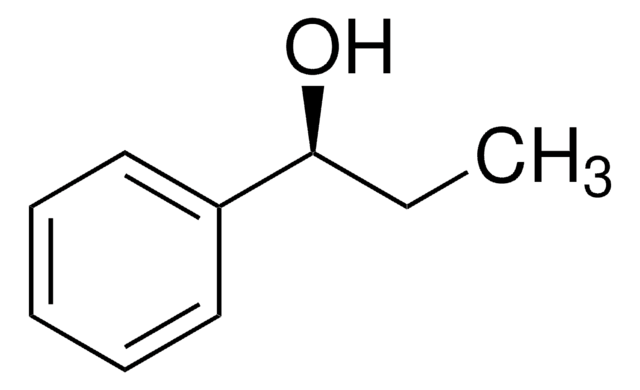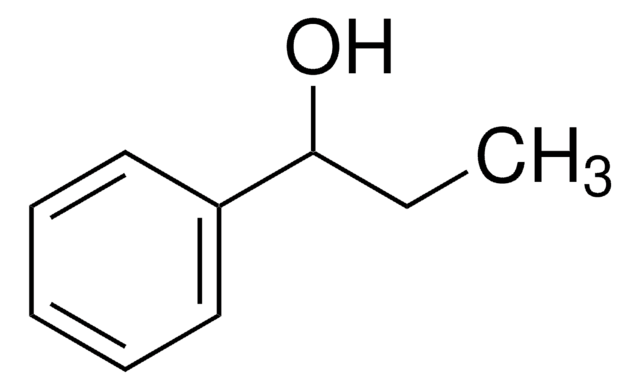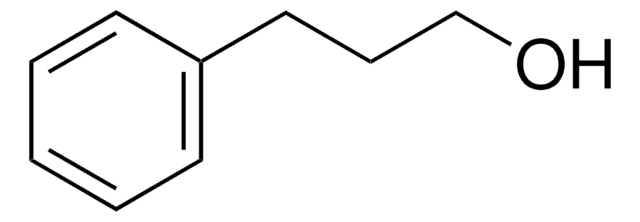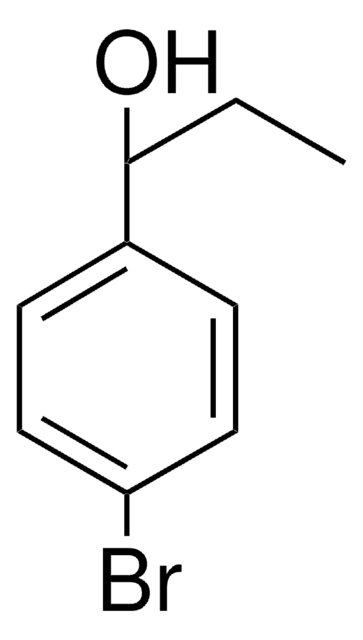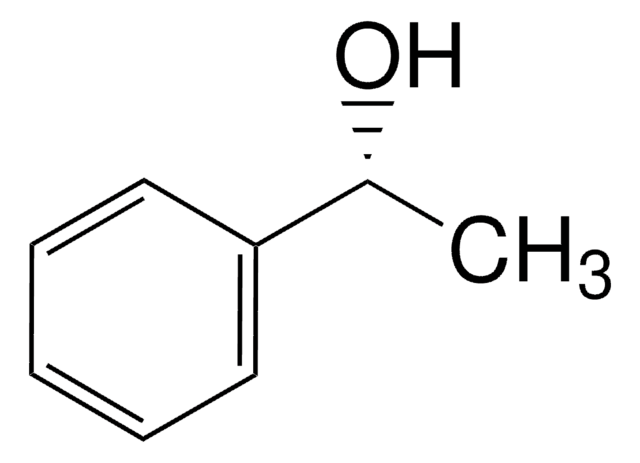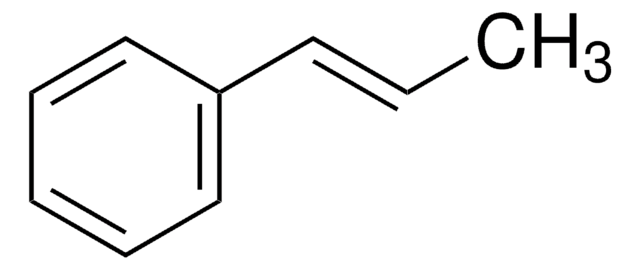Kluczowe dokumenty
111309
1-Phenyl-1-propanol
≥97%
Synonim(y):
α-Ethylbenzyl alcohol, (±)-1-Phenylpropanol
About This Item
Polecane produkty
Poziom jakości
Próba
≥97%
współczynnik refrakcji
n20/D 1.52 (lit.)
bp
103 °C/14 mmHg (lit.)
gęstość
0.994 g/mL at 25 °C (lit.)
grupa funkcyjna
hydroxyl
phenyl
ciąg SMILES
CCC(O)c1ccccc1
InChI
1S/C9H12O/c1-2-9(10)8-6-4-3-5-7-8/h3-7,9-10H,2H2,1H3
Klucz InChI
DYUQAZSOFZSPHD-UHFFFAOYSA-N
Szukasz podobnych produktów? Odwiedź Przewodnik dotyczący porównywania produktów
Powiązane kategorie
Opis ogólny
Hasło ostrzegawcze
Warning
Zwroty wskazujące rodzaj zagrożenia
Zwroty wskazujące środki ostrożności
Klasyfikacja zagrożeń
Acute Tox. 4 Oral
Kod klasy składowania
10 - Combustible liquids
Klasa zagrożenia wodnego (WGK)
WGK 3
Temperatura zapłonu (°F)
194.0 °F - closed cup
Temperatura zapłonu (°C)
90 °C - closed cup
Środki ochrony indywidualnej
Eyeshields, Faceshields, Gloves, type ABEK (EN14387) respirator filter
Wybierz jedną z najnowszych wersji:
Masz już ten produkt?
Dokumenty związane z niedawno zakupionymi produktami zostały zamieszczone w Bibliotece dokumentów.
Klienci oglądali również te produkty
Global Trade Item Number
| SKU | GTIN |
|---|---|
| 111309-250G | |
| 111309-50G | 4061838698896 |
Nasz zespół naukowców ma doświadczenie we wszystkich obszarach badań, w tym w naukach przyrodniczych, materiałoznawstwie, syntezie chemicznej, chromatografii, analityce i wielu innych dziedzinach.
Skontaktuj się z zespołem ds. pomocy technicznej
